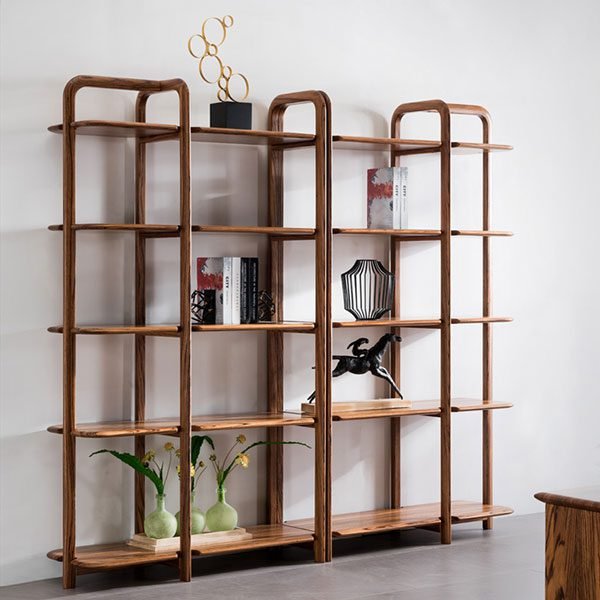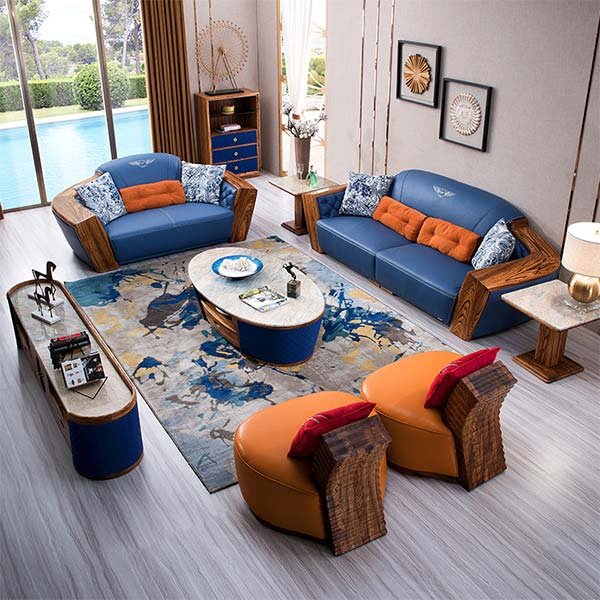“Unlocking the Potential of Wood: Designing Space, Crafting Comfort.”
Maximizing Functionality: Creative Ways to Utilize Wooden Furniture in Small Spaces
Insight into the Design Flexibility of Wooden Furniture in Small Spaces
Maximizing Functionality: Creative Ways to Utilize Wooden Furniture in Small Spaces
Wooden furniture has long been a popular choice for its timeless appeal and durability. In small spaces, however, it can be challenging to find furniture that not only fits but also maximizes functionality. Fortunately, wooden furniture offers a wide range of design flexibility that can be creatively utilized to make the most of limited space.
One of the key advantages of wooden furniture is its ability to be customized. Unlike other materials, wood can be easily shaped and modified to fit specific dimensions and requirements. This makes it an ideal choice for small spaces where every inch counts. Custom-built wooden furniture can be designed to fit perfectly into corners, alcoves, or even odd-shaped rooms, ensuring that no space is wasted.
Another way to maximize functionality is by choosing multi-purpose wooden furniture. For example, a wooden coffee table with built-in storage compartments can serve as both a surface for drinks and a place to store books, magazines, or remote controls. Similarly, a wooden bed frame with drawers underneath provides valuable storage space for linens, clothing, or other items that would otherwise clutter the room.
In addition to customizing and choosing multi-purpose furniture, utilizing vertical space is crucial in small rooms. Wooden shelves or bookcases can be mounted on walls to free up floor space while providing storage for books, decorative items, or even plants. Floating wooden shelves are particularly useful as they create the illusion of more space while adding a touch of elegance to the room.
When it comes to small kitchens or dining areas, wooden furniture can be a game-changer. Folding wooden tables and chairs are not only practical but also visually appealing. They can be easily folded and stored away when not in use, allowing for more space to move around. Additionally, wooden bar stools or counter-height chairs can be used to create a breakfast nook or a small dining area, saving valuable space that would otherwise be occupied by a traditional dining table.
Another creative way to utilize wooden furniture in small spaces is by incorporating built-in seating. Wooden benches or window seats can be custom-made to fit snugly against walls or under windows, providing both seating and storage. These built-in seating options not only save space but also add a cozy and inviting atmosphere to the room.
Lastly, don’t underestimate the power of color and finishes when it comes to wooden furniture in small spaces. Light-colored or natural wood finishes can make a room appear larger and more open. Additionally, choosing furniture with a minimalist design and clean lines can create a sense of simplicity and spaciousness.
In conclusion, wooden furniture offers a myriad of design possibilities for small spaces. By customizing, choosing multi-purpose pieces, utilizing vertical space, incorporating built-in seating, and considering color and finishes, it is possible to maximize functionality and create a stylish and functional living environment. So, whether you’re furnishing a tiny apartment or a cozy cottage, wooden furniture can be your secret weapon in making the most of limited space.
Space-Saving Solutions: Innovative Designs for Wooden Furniture in Compact Living Areas
Insight into the Design Flexibility of Wooden Furniture in Small Spaces
Space-Saving Solutions: Innovative Designs for Wooden Furniture in Compact Living Areas
Wooden furniture has long been a popular choice for homeowners due to its timeless appeal and durability. However, when it comes to small living spaces, many people believe that wooden furniture is not a practical option. They assume that it will take up too much space and make the room feel cramped. In reality, wooden furniture can be incredibly versatile and adaptable, making it an excellent choice for compact living areas.
One of the key advantages of wooden furniture is its design flexibility. Unlike other materials, wood can be easily customized to fit any space. Whether you have a tiny studio apartment or a cozy bedroom, there are innovative designs available that can maximize your space without compromising on style or functionality.
One popular space-saving solution is the use of multi-functional furniture. For example, a wooden coffee table with built-in storage compartments can serve as both a surface for drinks and a place to store books or magazines. Similarly, a wooden bed frame with drawers underneath provides extra storage space for linens or clothing. These clever designs allow you to make the most of every inch of your living area.
Another design option is modular furniture. This type of furniture consists of individual pieces that can be rearranged and combined in various ways to suit your needs. For instance, a modular wooden shelving unit can be configured to fit into a corner or along a wall, providing storage space for books, decorative items, or even a small television. The beauty of modular furniture is that it can be easily adjusted as your living situation changes, making it a versatile and long-lasting investment.
In addition to multi-functional and modular designs, wooden furniture can also be customized to fit specific dimensions. Many furniture manufacturers offer custom-made options, allowing you to choose the size, shape, and features that best suit your space. This level of customization ensures that your furniture will fit perfectly into your small living area, eliminating any wasted space.
Furthermore, wooden furniture can be designed to create the illusion of more space. Light-colored woods, such as oak or maple, can make a room feel brighter and more open. Additionally, furniture with slim profiles and clean lines can create a sense of airiness and spaciousness. By carefully selecting the design and finish of your wooden furniture, you can visually expand your living area and make it feel larger than it actually is.
In conclusion, wooden furniture offers a wide range of design options for small living spaces. Its design flexibility allows for the creation of multi-functional and modular pieces that maximize space without sacrificing style or functionality. Customization options ensure that your furniture fits perfectly into your compact living area, while the use of light-colored woods and slim profiles can create the illusion of more space. So, if you’re looking to furnish your small living area, don’t overlook the design potential of wooden furniture. It may just be the perfect solution for your space-saving needs.
Versatility and Adaptability: Exploring the Design Potential of Wooden Furniture in Limited Spaces
Versatility and Adaptability: Exploring the Design Potential of Wooden Furniture in Limited Spaces
Wooden furniture has long been a popular choice for interior design due to its timeless appeal and durability. However, when it comes to small spaces, many people believe that their design options are limited. In reality, wooden furniture offers a wide range of design flexibility, making it an excellent choice for small spaces.
One of the key advantages of wooden furniture is its ability to be customized and adapted to fit any space. Unlike other materials, wood can be easily modified to suit specific dimensions and requirements. This means that even in the smallest of spaces, wooden furniture can be designed to maximize functionality and efficiency.
For example, a small studio apartment may have limited floor space, but with the right wooden furniture, it can still feel spacious and organized. A custom-built wooden bed frame with built-in storage compartments can provide ample space for clothes, bedding, and other essentials, eliminating the need for additional storage units. Similarly, a wooden dining table with folding leaves can be extended when needed and folded away when not in use, saving valuable space.
Another advantage of wooden furniture in small spaces is its ability to create a sense of visual continuity. By using the same type of wood and design elements throughout the space, the furniture can blend seamlessly with the surroundings, creating a cohesive and harmonious look. This can make a small space feel larger and more open, as there are no visual interruptions or distractions.
Furthermore, wooden furniture can be designed to serve multiple purposes, further enhancing its adaptability in small spaces. For example, a wooden coffee table with hidden storage compartments can double as a storage unit for books, magazines, and other items, eliminating the need for additional shelving. Similarly, a wooden bench with a hinged seat can provide seating and storage space, making it a practical and space-saving solution for small entryways or bedrooms.
In addition to its design flexibility, wooden furniture also offers a wide range of styles and finishes to suit any aesthetic preference. From sleek and modern to rustic and traditional, there is a wooden furniture design to complement any interior design theme. This allows homeowners to personalize their small spaces and create a unique and inviting atmosphere.
In conclusion, wooden furniture is a versatile and adaptable choice for small spaces. Its ability to be customized, its visual continuity, and its multi-purpose functionality make it an excellent option for maximizing the design potential of limited spaces. Whether it’s a small studio apartment or a cozy bedroom, wooden furniture can transform any space into a functional and aesthetically pleasing environment. So, next time you’re faced with the challenge of designing a small space, consider the design flexibility of wooden furniture and unlock its full potential.
Заключение
Заключение: Изучение гибкости дизайна деревянной мебели в небольших пространствах позволяет понять, что дерево является идеальным материалом для создания мебели, которая эффективно использует ограниченное пространство. Гибкость деревянной мебели позволяет ее легко адаптировать под различные потребности и предпочтения владельца, а также создавать многофункциональные и компактные решения. Кроме того, дерево придает интерьеру теплоту и естественность, что особенно важно в небольших пространствах, где каждая деталь имеет значение. В целом, изучение гибкости дизайна деревянной мебели в небольших пространствах позволяет раскрыть ее потенциал и вдохновить на создание функциональных и эстетически привлекательных решений для таких помещений.



